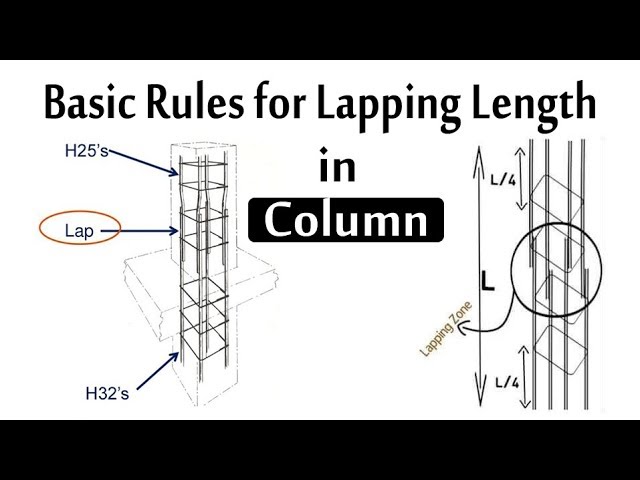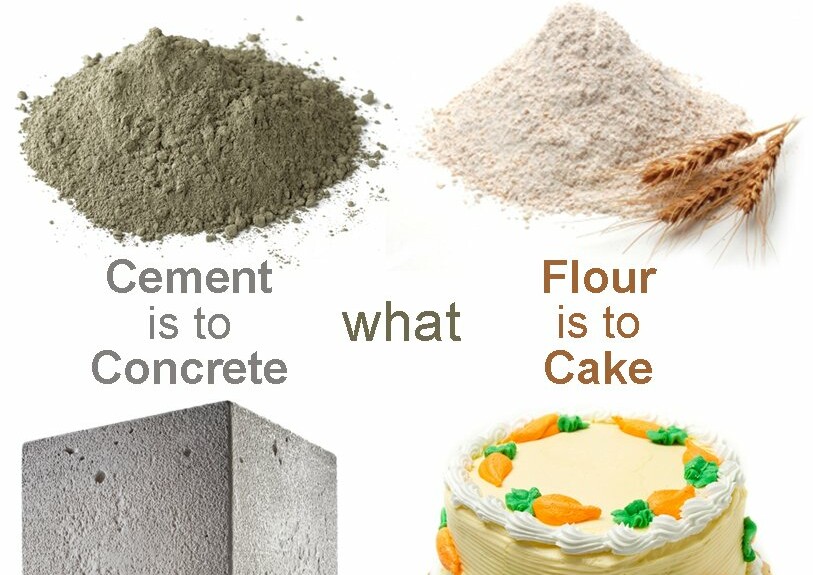Are you curious to know how many types of footings are there in the construction line? If you are the curious type, keep on scrolling this post that will help you find the most widely used types of footings used in construction.
The foundation/footing is the most crucial part of a building structure. It helps distribute the load equally on the foundation soil, minimize the stress against the soil movement, and keep your building stable. But for extra stability, the settlement structure must be uniform and within the toleration limit. The pressure doesn’t exceed the allowable bearing limit.
Different types of footing/foundation have been constructed on the ground. In this article, we’re going to discuss different types of footings. Let’s pay attention to it. But before that, a little about footing and why we need to use it to get a better idea about what’s coming in the article.
What Exactly is Footing?
Footing is a rigid structure constructed in the building pillars or at the construction site to transfer load beneath the soil or underlying soil. However, the selection of the type of footing will depend on several factors, which are as follows:
- Condition and type of soil.
- The soil depth upon which safe-bearing strata are present.
- Different types of superstructures.
Now you know what is footing and what are the various factors that one should keep in mind while selecting the types of footings. Let’s move to the other section where we will be discussing the types of footings.
Types of Footings
Different types of footings which is used for the construction of the building are as follows:
1. Strip Footing/Wall Footing

Strip footing is a basic component of the shallow foundation that distributes the entire weight of the load-bearing structure across the ground area. It is commonly used as the base foundation of the main load-bearing wall and can be constructed on soil with excellent load-bearing capacity. This is also famous for the name wall footing.
It is a continuous masonry strip that distributes the pressure of a load-bearing wall over a patch of ground. The soil’s carrying capacity is considered while determining the strip footing base width. The breadth of the Strip footing is inversely correlated with soil carrying capability.
There are many types of walls too that you can understand once you read our article.
2. Isolated Footing

This type of footing can be in varying shapes, such as circular, square, and also in the form of rectangular slabs.
The isolated footing has a uniform thickness which is distributed under each section. Where the soil carrying capacity is typically high, isolated footings are offered. They consist of a thick slab that might be flat, stepped, or inclined. This type is the most cost-effective than other kinds of concrete foundations.
3. Flat or Plain Footing
These types of footings, given below each structure separately, are often rectangular, square, or round in shape. One of the pile foundations is the flat or pad foundation. It is a uniformly thick round, square, or rectangular slab.
4. Spread Footing
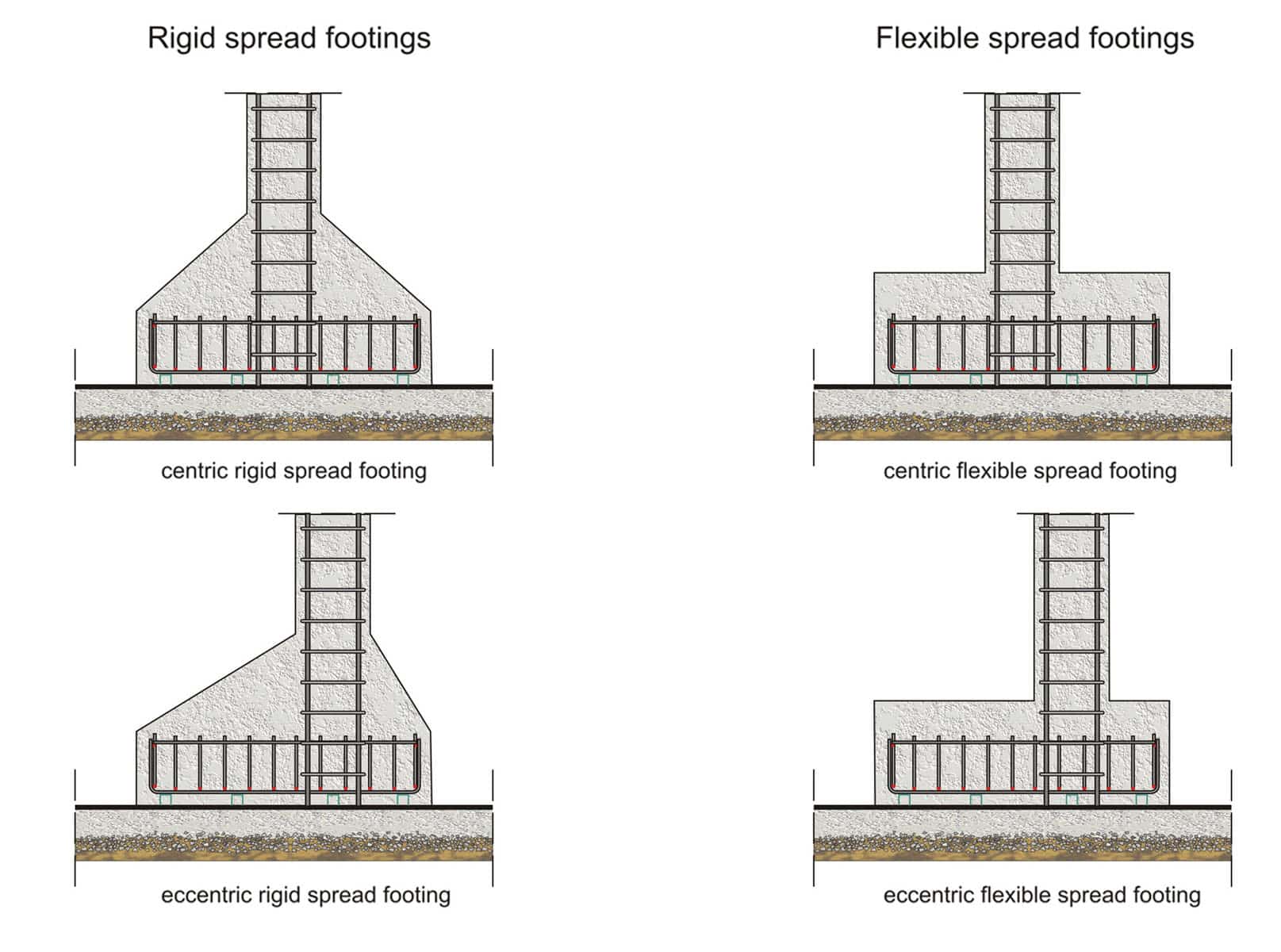
The spread footing is presented under the foundation base so that the load of the entire structure will be distributed on the broad area of soil in such a manner the limit of safe bearing capacity should not exceed.
5. Stepped Footing
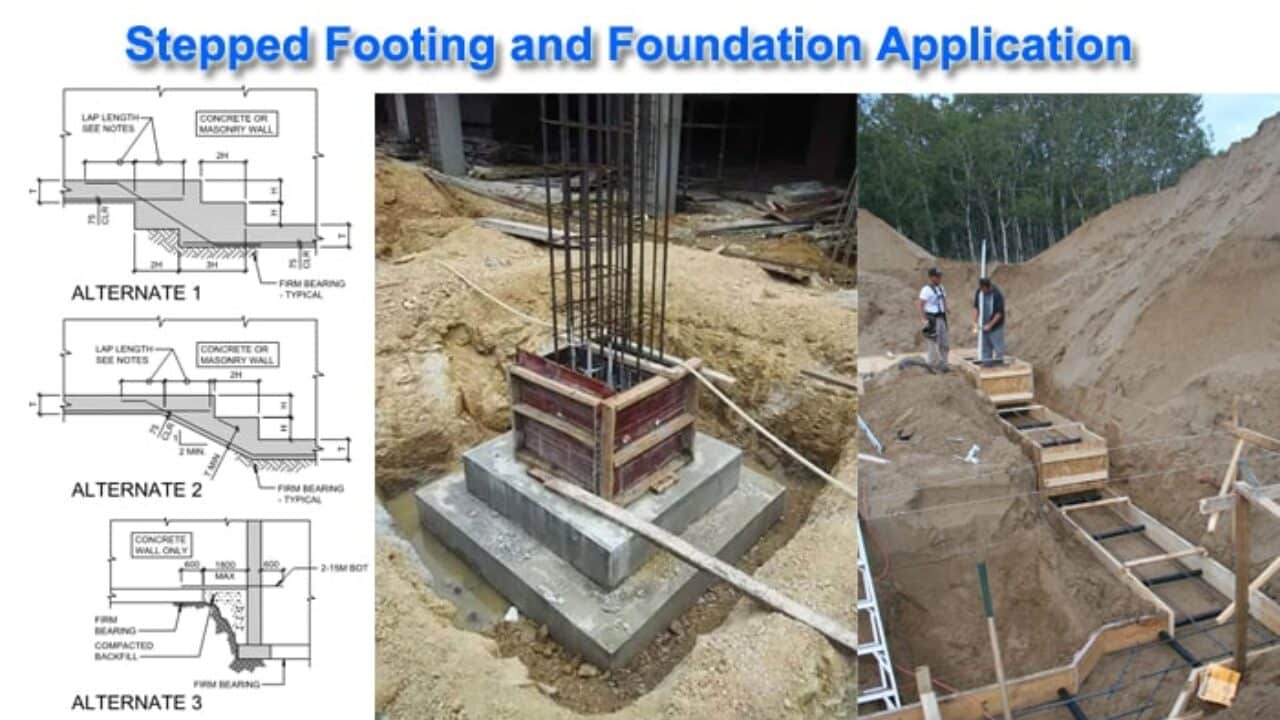
The stepped footing is constructed to keep the metal block away from the direct contact of soil to save it from corrosion. This footing type is generally used to bear the load of the metal column and transmit the entire load below the ground.
These footings were built in the past but are now outdated. As the name implies, footings are layered on top of one another to create stairs. Steps are created by stacking concrete specimens in cross sections on top of one another. A Step foundation is another name for these kinds of footings. Residential constructions typically employ stepped footing.
6. Strap Footing
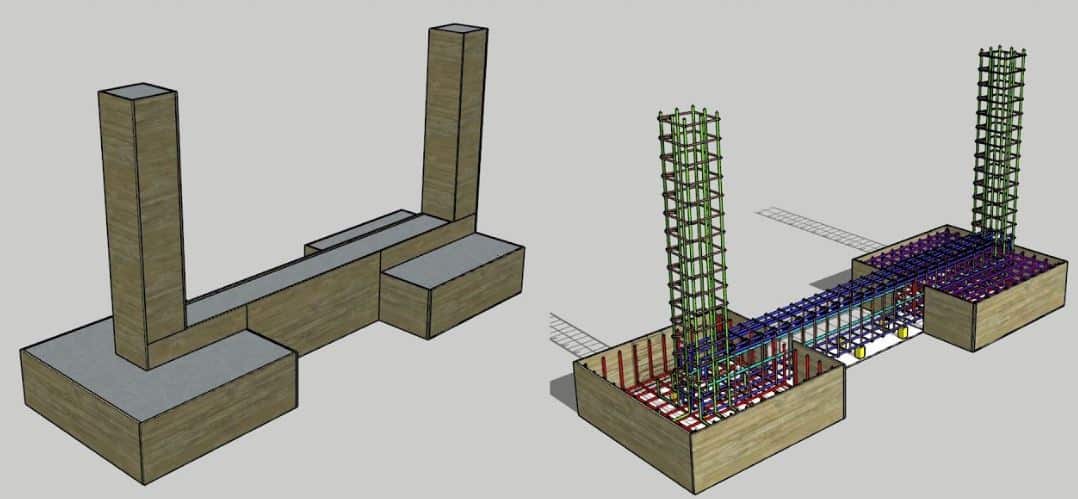
This is a form of footing in which the inner and outer column is connected with the strap beam. It doesn’t transfer any form of load on the soil. The individuals strap footing areas of different columns are highly arranged so that the C.G of the entire load will pass through the C-G of the footing areas.
Once the strap criterion has been achieved, the total pressure will be distributed below the footing. The pressure will be uniform.
Also Read: A Guide on Types of Cement and Its Uses
7. Sloped Footing Or Trapezoidal Footing
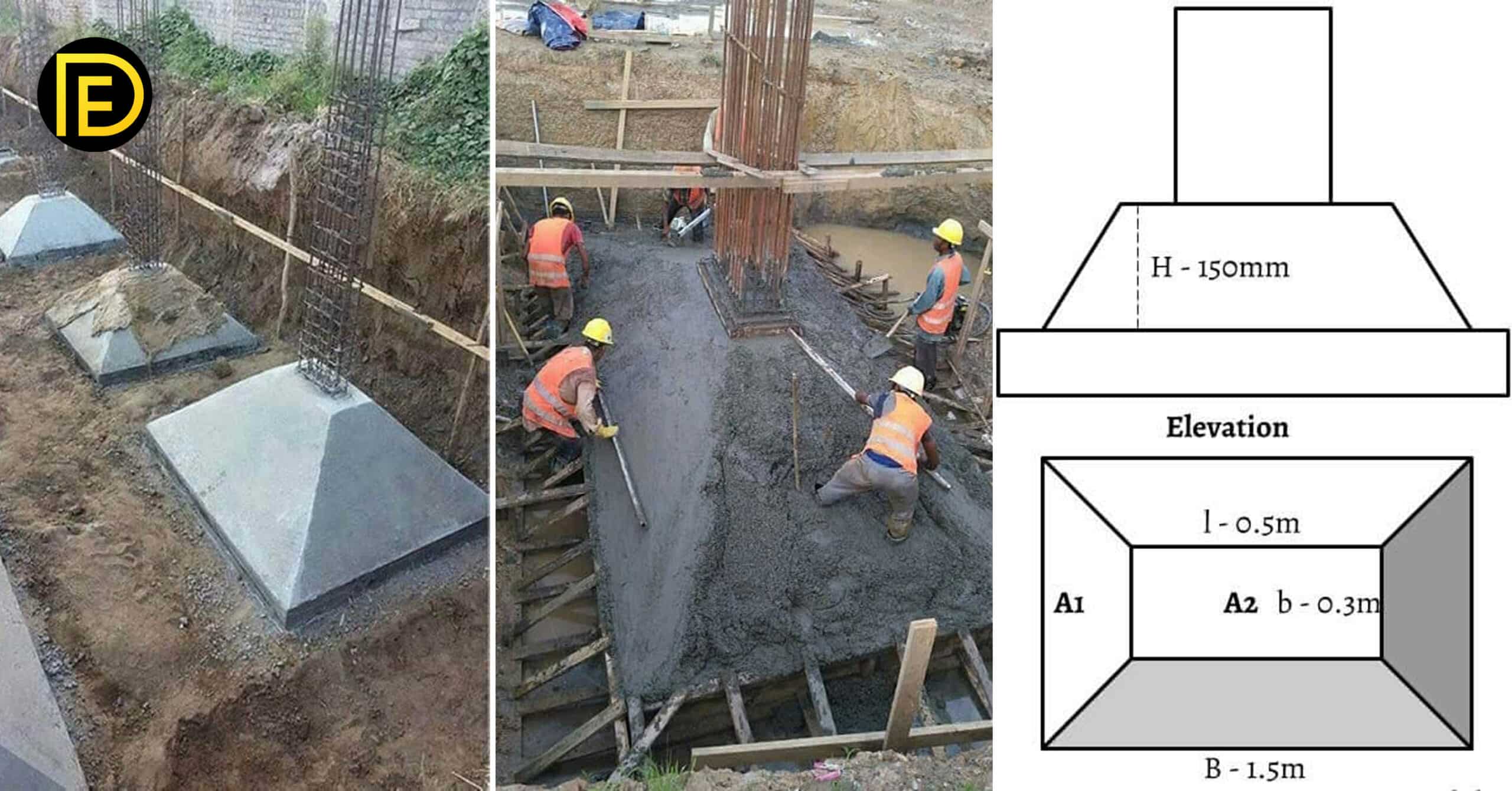
This type of footing has a side face or slopping top, which is why it is known as sloped footing. This type of sloped footing is extremely useful in formwork construction.
Sometime before, we also posted an article featuring the best types of slabs that every engineer should know. Have a look!
8. Raft Foundation
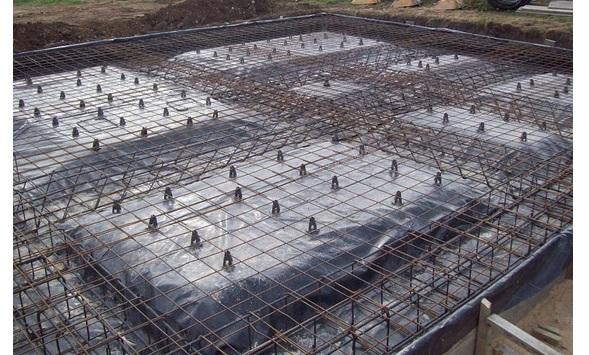
The foundation or footing type covers the whole area present under the structure. It only has an RCC slab which covers the beam, slab, and whole area. It is also known as a mat foundation, and this type of footing is typically adopted in building construction when heavy structures have to be constructed on marshy sites and soft made-up grounds.
A raft foundation is a substantial reinforced concrete slab that spans the whole space underneath the building and supports the columns. Due to its intrinsic stiffness, such a foundation reduces dislocation motion.
If the footing area increases, the precast overlap, and instead of having one footing for each column, all columns are put on a single footing.
9. Pile Foundation/Footing
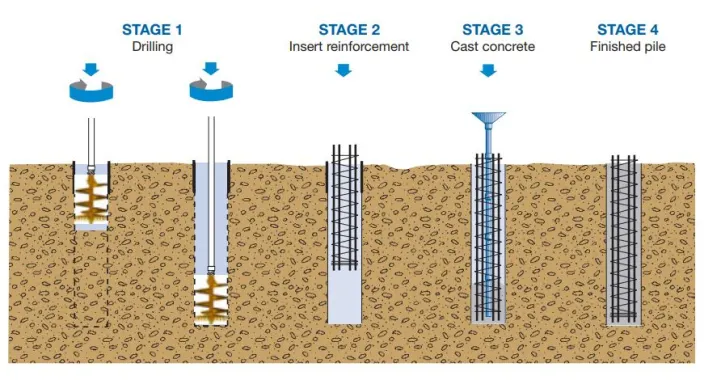
A pile is a long, vertical load-bearing structure constructed of concrete, steel, or wood. A set of piles are inserted into the ground to provide pile foundations for buildings.
They are built in areas where severe settlement has to be reduced, loads must be carried across soft soil strata, and the soil has a suitable bearing capability. Certain footings are offered when the soil’s carrying capacity is deficient, and the groundwater table is high. These footings are typically used to build pillars on bridges and seashores.
10. Combined Footing
Combination footing refers to a footing that supports two or more pillars. The plan of this kind of footing can be either square or trapezoidal. The following circumstances result in combined footing.
- When the individual footing overlap and lie close to each other
- Soil that has low load bearing capacity and needs individual footing
We cannot cast separate footings due to a shortage of space; thus, many footings are integrated into a single footing. Based on their form, they are divided into two types:
- Rectangular Combined Footing
- Trapezoidal combined footing.
These are some of the most widely used types of footings used while laying the foundation of any building.
FAQs
-
Which one is the most common type of footings used in the construction?
Isolated footing is the most common type of footing used by engineers all around the world while laying the foundation of a building. It is an easy to construct and economical way of laying the foundation. It is generally used when the structure is on the columns.
-
What is continuous footing?
When there is a shallow foundation that supports more than two columns is known as continuous footing. It is generally used where the soil has good bearing capacity so that there will be a little load occurrence on the building.
-
What is the difference between a footing and a foundation?
The thing that is in contact with the soil ground is footing. On the other hand, a structure that is erected on the footing to transfer the load to the ground is called a foundation.
-
What are the modes of footing failure?
Local Shear, Punching Shear, and General Shear are the three major modes of footing failure called.
-
Why do you use trapezoidal footing?
This type of footing technique is used when one column load is more than the other column. That is where Trapezoidal combined footing is used.
Types of Footings – Bottom Line
The basic function of the footing is to distribute the weight equally on the soil ground and keep the structure rigid for years. However, the type of footing is selected according to the soil type and ground condition. So, now you have the entire information about the different types of footings required in construction areas. It will be easier for you to decide which works well for your construction site.
If you think we have missed anything in our guide on different types of footings, do let us know in the comments section below. Also, help us to know what would you like us to write next that will help you in your civil journey.



